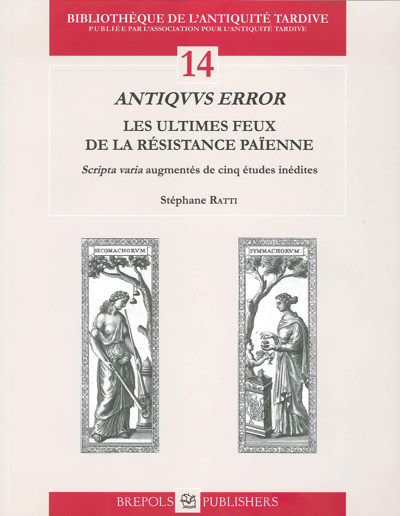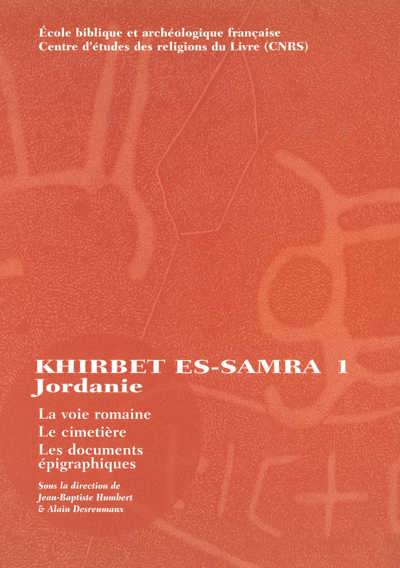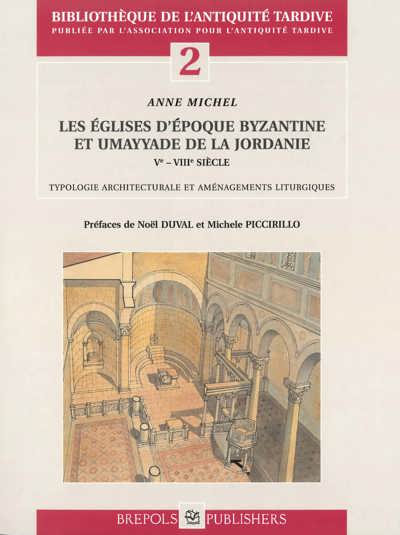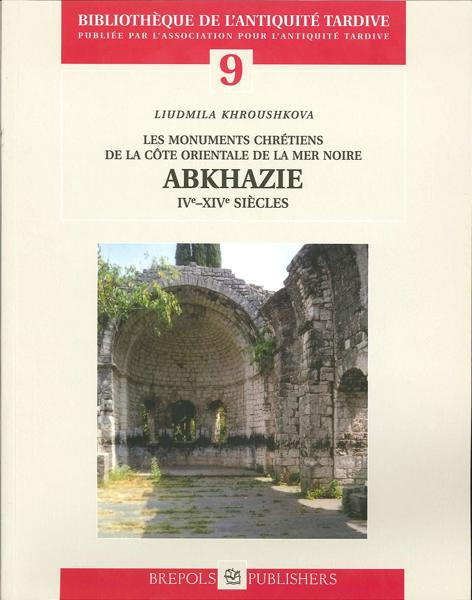
The Imagery and Aesthetics of Late Antique Cities
Max Ritter, Élodie Turquois (eds)
- Pages: x + 197 p.
- Size:216 x 280 mm
- Illustrations:4 b/w, 17 col., 4 tables b/w.
- Language(s):English
- Publication Year:2025
- € 125,00 EXCL. VAT RETAIL PRICE
- ISBN: 978-2-503-61191-4
- Hardback
- Available
- € 125,00 EXCL. VAT RETAIL PRICE
- ISBN: 978-2-503-61192-1
- E-book
- Available
This volume brings together scholars of late antiquity across disciplines such as philology, literature, archaeology and art history, in order to discuss the imagery and aesthetics of cityscapes in the period with a strong theoretical framework.
« Cet ouvrage est un régal pour l’esprit : un volume collectif cohérent, un plan construit, un anglais de qualité dans toutes les communications, des reproductions en couleur légendées à la perfection. » (Stéphane Ratti, dans Commentaire, 192, 2025, p. 933)
Élodie Turquois earned a doctorate in Classical Languages and Literature from the University of Oxford with a dissertation on materiality and visuality in the literary corpus of Procopius of Caesarea. She is the author of ‘A Narratological Reading of Procopius’ (with Olivier Gengler), in A Companion to Procopius, eds. Mischa Meier and Federico Montinaro, Brill 2022, and the editor of Procopius of Caesarea: Literary and Historical Interpretations, Routledge 2018 (with Chris Lillington-Martin). As part of the DFG funded project “Procopius and the Language of Buildings” (JGU-Mainz and MLU-Halle-Wittenberg), she prepared a new edition and translation of Book I of the Buildings as well as the philological and literary components of the co-authored interdisciplinary commentary with Max Ritter and Marlena Whiting (forthcoming).
Max Ritter received his PhD in the field of Byzantine Studies in 2017 at the Johannes Gutenberg-Universität Mainz, and is research associate at the same university. His domains of expertise are political and economic history of late antiquity and the Middle Byzantine period. He is the author of Zwischen Glaube und Geld: Zur Ökonomie des byzantinischen Pilgerwesens (4.–12. Jh.) (Mainz: RGZM press, 2019), and has published many articles on Byzantine pilgrimage and travel, but also on other research subjects like Byzantine Paphlagonia and Venetian Cyprus. As part of the DFG funded project “Procopius and the Language of Buildings”, he prepared the historical component of the co-authored interdisciplinary commentary with Élodie Turquois and Marlena Whiting (forthcoming).
While the role of the city in Late Antiquity has often been discussed by archaeologists and historians alike, it is only in recent years that scholarship has begun to offer a more nuanced approach in our understanding to how such cities functioned, stepping away from the traditional paradigm of their decline and fall with the collapse of the Roman Empire. In line with this approach, this deliberately interdisciplinary volume seeks to provide a more multifaceted understanding of urban history by drawing together scholars of literary and material culture to discuss the concepts of imagery and aesthetics of late antique cities.
Gathering together contributions by historians, philologists, archaeologists, literature specialists, and art historians, the volume aims to explore the imagery and aesthetics of cities in Late Antiquity within a strong theoretical framework. The different chapters explore the aesthetics of cityscape representations in literature and art, asking in particular whether literary representations of late antique urban landscapes mirror the urban reality of eclectic ensembles of pre-existing architecture and new buildings, as well as questioning both how the ideal of the city evolved in the imagination of the period and if imperial ideology was reflected in literary depictions of cities.
List of Illustrations
Abbreviations
Imagery and Aesthetics of Late Antique Cities. An Introduction
Elodie Turquois
From the City of Indians to Jerusalem. Nonnus of Panopolis’ Real and Imagined Cities
Arianna Rotondo
Experiencing a City in Harmony. The Aesthetics and Ethics of Gaza in Choricius’s Panegyrics
Jan R. Stenger
Aesthetics of Urban Decor in Sixth-Century CE Greek ekphraseis. Gaza and Constantinople
Delphine Lauritzen
Constantinople in the Latin Geographical Imagination (300–600)
Caroline Bélanger
The Emperor as Builder: Justinian, Constantinople, and the Past in Malalas’ Chronographia and Procopius’ Buildings
Olivier Gengler
From Constantinople to Edessa. Syriac Historians and the Justinianic City
Lea Niccolai
Cityscapes in Early Syriac Poetry. Nisibis, Amida, Edessa
Philip Michael Forness
The Beautiful Wall. Militarized Cityscapes in the Age of Justinian
Conor Whately
A Land of Small Forts and Cross Walls. The Sixth-Century Balkans according to the Buildings
Alexander Sarantis
The City Foundations of Justinian between Imagery and Reality through the Lenses of Justiniana Prima and Caput Vada
Max Ritter
Why Depict a City? Urban Imagery in the Early Medieval Eastern Mediterranean
Bill Leal
Why Else Depict a City? A Response
Philipp Niewöhner
Epilogue. Cities of the Mind, Cities of the Heart, Cities of Stone
Hendrik Dey




